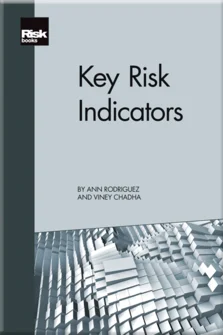The Enterprise Risk Management Framework
Foundations
Challenges
Culture is Foundational
Enterprise Risk Management
The Enterprise Risk Management Framework
Operational Risk Management
The KRI Framework
The KRI Programme
The KRI Project
Using KRIs
Reporting the KRIs
KRI Assessment Calculator
Case Studies
The Future of KRIs and Closing Thoughts
In this chapter, we will focus on the basics of an enterprise risk management framework and programme, and describe how a strong, well-implemented KRI programme is critical to the success of enterprise risk management. This chapter will describe the interactions of KRIs with all of the processes within ERM forming an integrated risk management function, and also broadly cover the role of KRIs in monitoring risk.
WHAT’S IN THE ERM FRAMEWORK?
The ERM framework provides a structure for the governance, data, tools and processes that an organisation can utilise to establish a risk appetite, identify, assess and manage risks, and monitor changes that could impact the risk profile ongoing, and to escalate risks in a timely and appropriate manner.
Built on a foundation of a strong risk culture and accurate, complete data, an organisation has some capacity for risk-taking (risk capacity). This could be the amount of capital available for deployment or investment. Along with this capacity for risk-taking, there must also be some boundaries that support how the business achieves its objectives (risk appetite/risk tolerance), a way of describing those business objectives (strategic
Copyright Infopro Digital Limited. All rights reserved.
As outlined in our terms and conditions, https://www.infopro-digital.com/terms-and-conditions/subscriptions/ (point 2.4), printing is limited to a single copy.
If you would like to purchase additional rights please email info@risk.net
Copyright Infopro Digital Limited. All rights reserved.
You may share this content using our article tools. As outlined in our terms and conditions, https://www.infopro-digital.com/terms-and-conditions/subscriptions/ (clause 2.4), an Authorised User may only make one copy of the materials for their own personal use. You must also comply with the restrictions in clause 2.5.
If you would like to purchase additional rights please email info@risk.net











